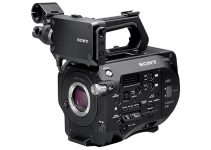No matter what video project you’re working on, your goal as an editor is to move as quickly and efficiently as possible through your timeline while maintaining a high level of quality at the same time. A popular method of improving your editing workflow is by investing in hardware control surface that allows for quicker access to commonly utilized tools inside of your NLE instead of using keyboard shortcuts or a mouse to navigate to a particular editing tool.
Long story short, if you’re looking for a reasonably-priced set of hardware controllers for your editing software, then you might want to consider the Palette Aluminum Expert Control Surface, recently reviewed by Armando Ferreira and showcased in the video below.
Even though the Palette Control Surface has been on the market for a while, there are still many folks out there unfamiliar with the device. In a nutshell, it’s a modular set of knobs, buttons that can be mapped to specific functions by the user.
The modules are magnetically connected to each other with a hub module tethering the entire Palette to the computer via a Micro USB cable. This layout allows users to reposition the knobs and sliders to best suit their workspace.
Other than that, all the controls can be mapped using the PaletteApp which can be downloaded from the company’s website and can work for many different applications – including Adobe Premiere Pro CC, Photoshop, Final Cut Pro X, and Lightroom.
For example, when editing in Premiere, one of the knob modules (which also acts as a button) can be configured to adjust a video clip’s scale when turned, and it could delete a clip when the knob is pressed. You could also choose to have a slider module to adjust the opacity of a clip or assign it to virtually any other setting that saves you time and effort while editing or color grading.
In the meantime, the PaletteApp can help customize the functions of sliders and knobs by limiting sensitivity and maximum/minimum values, helping you better dial in your settings. For example, when color correcting, Ferreira has one of the sliders programmed to tweak white balance. In this case, each slider is set between -20 and 20 to provide a narrower range of control over the setting.
Although the Palette Control Surface can aid in speeding up your editing workflow, the device does pose a few quirks that may not necessarily be a deal breaker but are worth noting as they may come as an inconvenience for some users. For instance, for certain mapped features, it may take many turns on a knob to reach a specific value
An example in that regard is when adjusting contrast is assigned to a knob, wherein going from 0 to 100 will take a large number of terms to reach a maximum value. Even though Ferreira adjusted the knob sensitivity in the PaletteApp, the problem persisted.
Furthermore, while the magnetic interfaces of the module allow for easy re-configuring of the Palette, it makes it quite difficult to move the system around your desk as any attempt to pick it up will result in you dropping all of the modules. That being said, be very careful when trying to move the combo around.
Priced at $400 for the Expert kit, the Palette Control Surface may not be for everyone, especially for people working on a shoestring budget. Nonetheless, the Palette Gear’s unique design and potential for expansion on the consumer’s end make the product an exceptional accessory for seasoned editors looking for more hands-on interaction with their editing software.
[source: Armando Ferreira]
Order Links:
Palette Aluminum Expert Control Surface Kit (B&H, Amazon)
Disclaimer: As an Amazon Associate partner and participant in B&H and Adorama Affiliate programmes, we earn a small comission from each purchase made through the affiliate links listed above at no additional cost to you.
Claim your copy of DAVINCI RESOLVE - SIMPLIFIED COURSE with 50% off! Get Instant Access!



